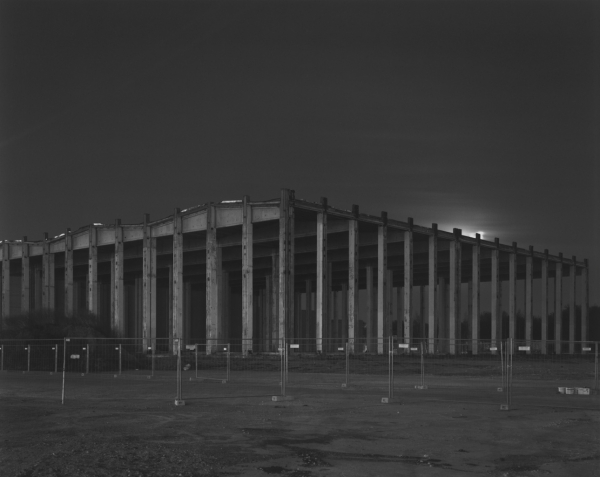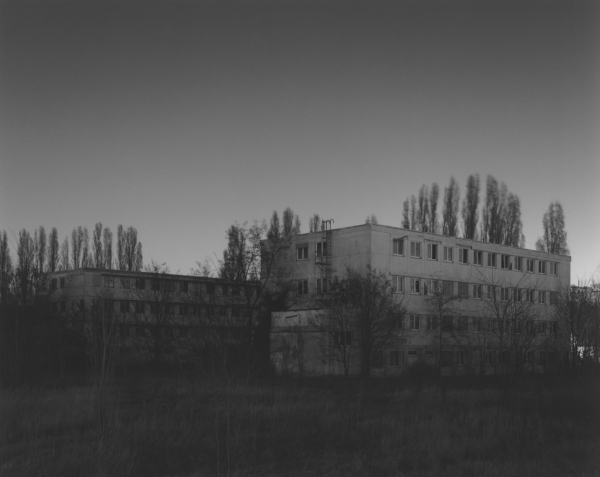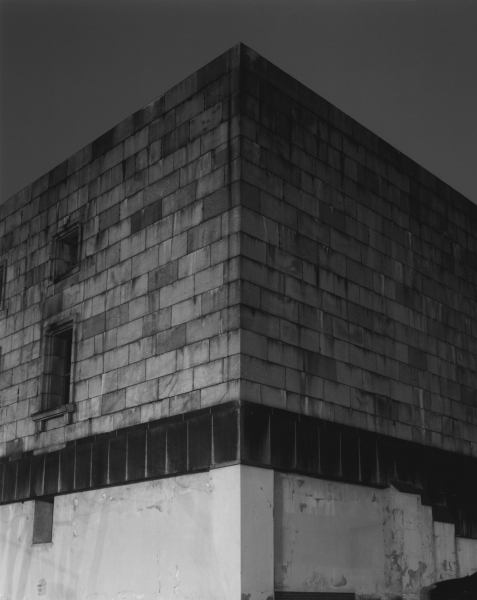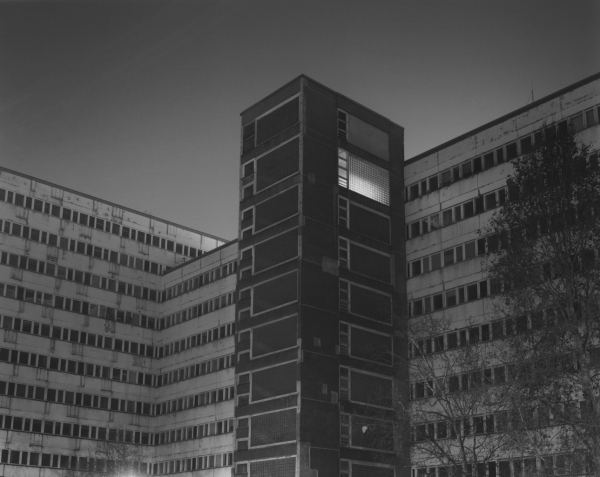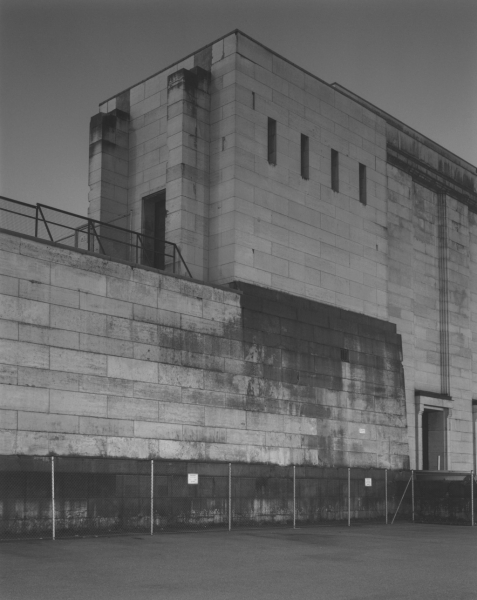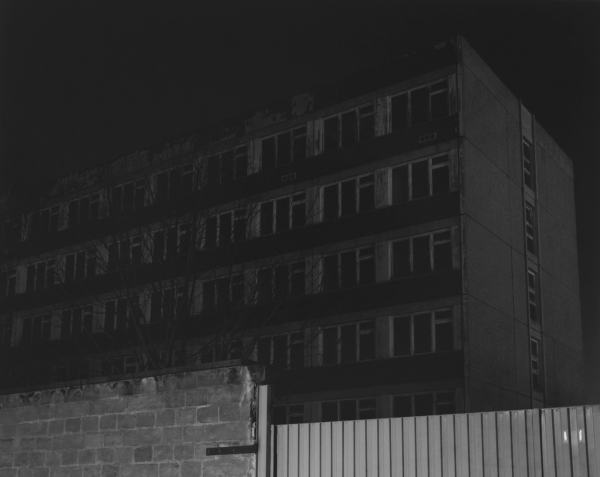Sam Laughlin – Architecture of Necessity
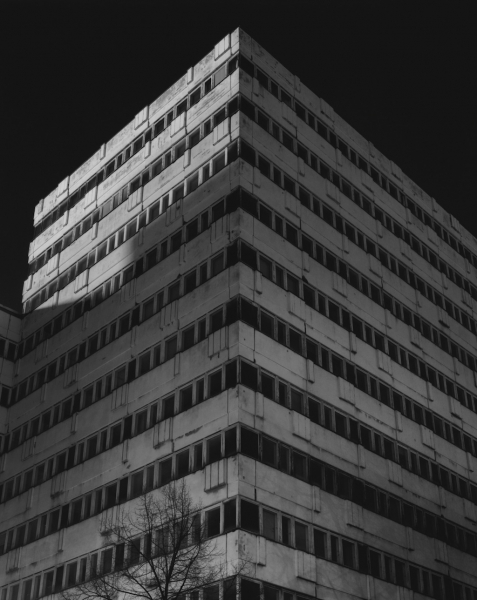
Architecture is one of those forms that can, either immediately or in retrospect, reveal the ideological position of those responsible for it, as building is the most obvious way that this rhetoric manages to extend itself into the world. With Mnem, Sam Laughlin has undertaken a study of these architectural forms in order to confront how the particular condition of a given historical moment can bleed into the present. But the images are not exactly “documents” of this process; rather he presents the buildings in a distinctly theatrical manner, as though they were stage-sets for the re-enactment of those ideologies that gave them form.
While the use of civic space to locate or manifest otherwise intangible structures of authority is by no means a new phenomenon, totalitarian regimes in the 20th Century had a decidedly performative aspect. In so far as these spaces were intended to actively produce a sense of spectacle, they also affirm the values of those ideological structures that gave rise to them. Thus, the architecture of fascism can be seen as having its own particular character, suggesting a benevolent central order that is, in fact, deeply inimical to it and that can only be sustained by force – this brutal clarity of form is a product of the historical circumstances that brought it into being.
While Laughlin avoids being too prescriptive about where exactly the pictures were made, he does indicate these sites are German; indeed it seems likely that many viewers will make this connection intuitively and it is, undoubtedly, an important one. But at the same time, to regard his interest in – and presentation of – these architectures as being the product of a narrow historical frame is to misunderstand both the forces that produced them and Laughlin’s own purpose. In that sense, the treatment of these buildings is not a rote account of place and event; rather it traces the unconscious historical continuity of these forms as social archetypes.
In looking to the character of the architecture as opposed to its position in a certain narrative Laughlin is attempting to locate a genealogy of space particular to the forms of authority that spread diffusely through the social fabric. That he chooses to photograph the buildings at night is no doubt intended to minimise the details that might otherwise divert our attention, but the result is not at odds with the conceptual grounding of the work itself, because crucially he is attempting an excavation of this architecture as a set of “types” in terms of how they manifest a particular kind of historical necessity.
The inverse of modernity’s penchant for clarity and the “transparent” is shown here, paradoxically, to be a spectacle of concealment. We cannot see the forms of authority that these buildings implicitly contain and this denial is perhaps the ultimate sign of how that authority perpetuates itself – its designations may change, but its strategies do not. Architecture, like the various forms of ideology that accompany it, is an instrument used to create hierarchies and these are thoroughly implicated in the very structures themselves; so, although their specific histories may remain obscure, what is repressed can always return to haunt us and, inevitably, it does.

